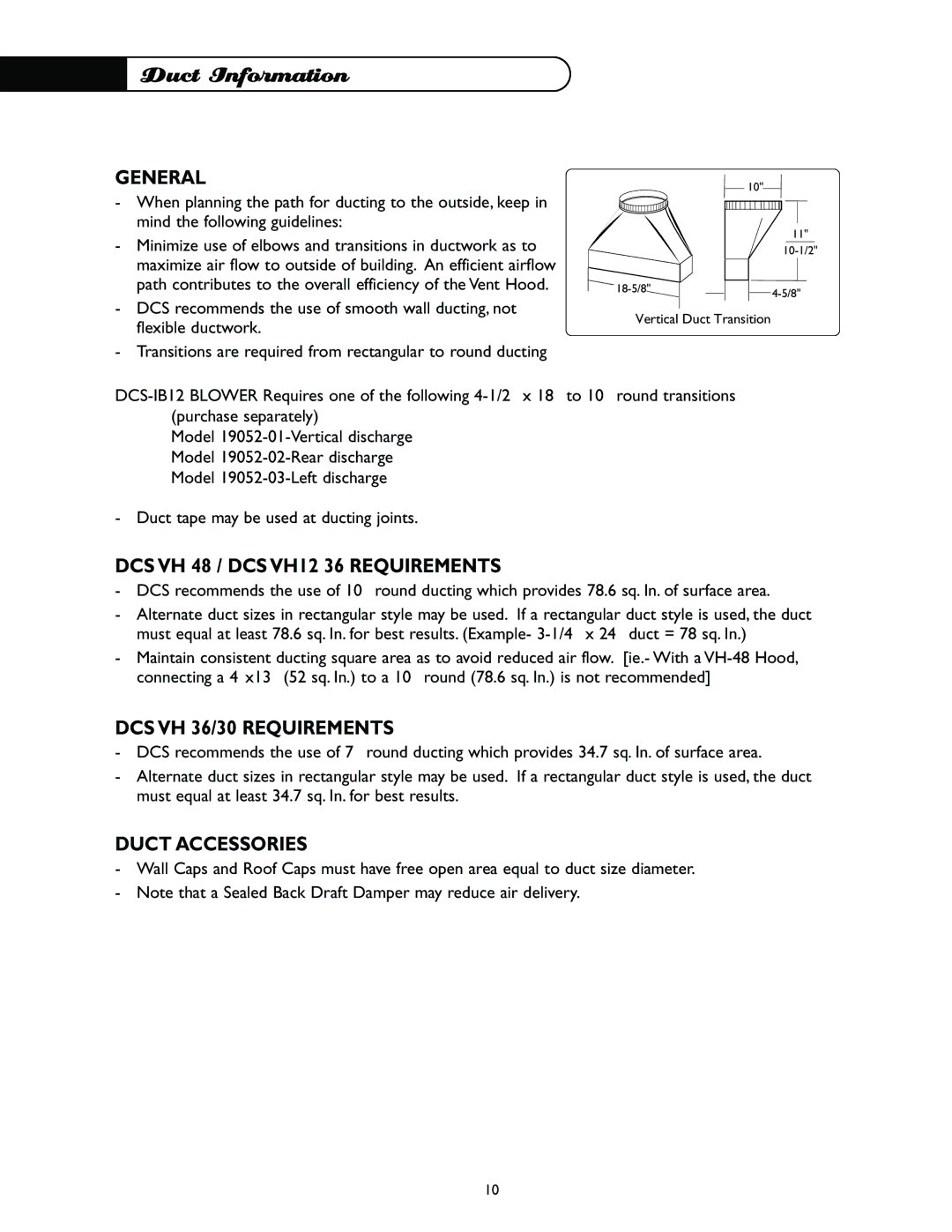
 Duct Information
Duct Information
GENERAL
-When planning the path for ducting to the outside, keep in mind the following guidelines:
-Minimize use of elbows and transitions in ductwork as to maximize air flow to outside of building. An efficient airflow
path contributes to the overall efficiency of the Vent Hood.
-DCS recommends the use of smooth wall ducting, not flexible ductwork.
-Transitions are required from rectangular to round ducting
| 10" |
| 11" |
| |
|
Vertical Duct Transition
Model
- Duct tape may be used at ducting joints.
DCS VH 48 / DCS VH12 36 REQUIREMENTS
-DCS recommends the use of 10” round ducting which provides 78.6 sq. In. of surface area.
-Alternate duct sizes in rectangular style may be used. If a rectangular duct style is used, the duct must equal at least 78.6 sq. In. for best results. (Example-
-Maintain consistent ducting square area as to avoid reduced air flow. [ie.- With a
DCS VH 36/30 REQUIREMENTS
-DCS recommends the use of 7” round ducting which provides 34.7 sq. In. of surface area.
-Alternate duct sizes in rectangular style may be used. If a rectangular duct style is used, the duct must equal at least 34.7 sq. In. for best results.
DUCT ACCESSORIES
-Wall Caps and Roof Caps must have free open area equal to duct size diameter.
-Note that a Sealed Back Draft Damper may reduce air delivery.
10
